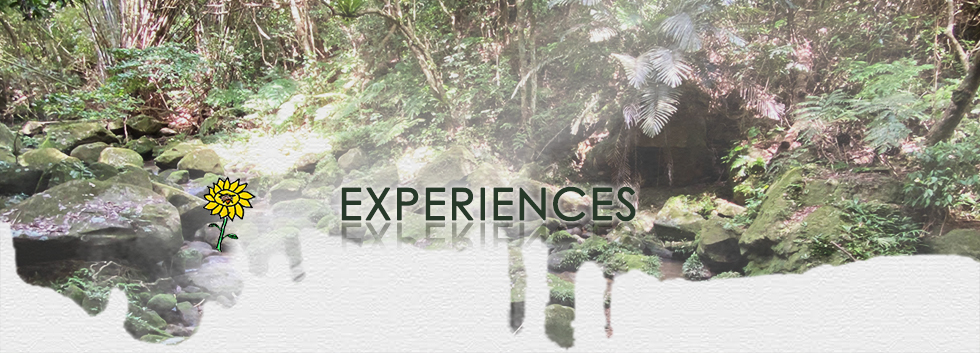Organized by Bo-Hsiang
Park Ecosystem
(A) Daan Forest Park
The Society of Wilderness (SOW) hosted the “Walk in Daan, Breathe in the Forest” event, which I was looking forward to. Despite consecutive rainy days, the event was on schedule. The sky cleared up in the morning of the day, which allowed us to participate in the event with nice autumn weather.
We were greeted by enthusiastic SOW volunteers with an introduction to their wild names and the history of Daan Forest Park. The park is located in the center of Taipei City and covers an area about 26 hectares. It is an ecological park with dense vegetation, which is named as the Lung of the City. The park was previously known as Park No. 7 and was once the largest park in Taipei. It was opened to the public on March 29, 1994.
Next we moved on to the main event – “All-inclusive Banyan Edition”. The volunteers designed an interesting competition game that put us in different teams, the game was to find the correct match of banyan tree leaf and fruit.
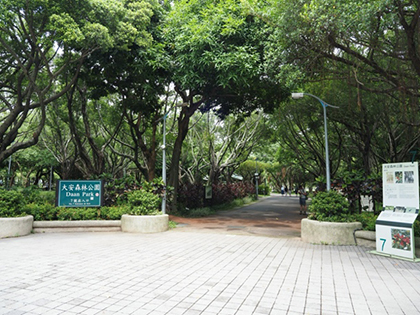
Source: Wilderness Crossing
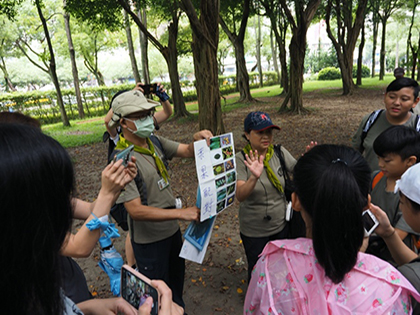
Source: Wilderness Crossing
 After the competition, the volunteer “Hamster” guided us through the park to learn more about banyan and other plants such Chinese Banyan, Large-leaved Banyan, Stripe Banyan, Fiddle-leaf Fig, Hauil Fig, Weeping Fig, etc. Fig fruits, known as syconia, requires wasps to pollinate before it can develop into a fruit. There is a tiny hole on the top that allows wasps to enter and perform pollination. There is an interdependent relationship between the trees and wasps. In addition to learning about the banyan and fig's economic value and contribution to ecosystems, the volunteers taught us to make slippers from the leaves of India Rubber Tree. It was very interesting to make our own slippers with our own hands and nature materials. The banyan trees are also the city trees of Taipei, which symbolize acceptance, generosity, and tolerance. The trees have enriched Taiwan’s eco-system and made it more energetic.
After the competition, the volunteer “Hamster” guided us through the park to learn more about banyan and other plants such Chinese Banyan, Large-leaved Banyan, Stripe Banyan, Fiddle-leaf Fig, Hauil Fig, Weeping Fig, etc. Fig fruits, known as syconia, requires wasps to pollinate before it can develop into a fruit. There is a tiny hole on the top that allows wasps to enter and perform pollination. There is an interdependent relationship between the trees and wasps. In addition to learning about the banyan and fig's economic value and contribution to ecosystems, the volunteers taught us to make slippers from the leaves of India Rubber Tree. It was very interesting to make our own slippers with our own hands and nature materials. The banyan trees are also the city trees of Taipei, which symbolize acceptance, generosity, and tolerance. The trees have enriched Taiwan’s eco-system and made it more energetic.

Source: Wilderness Crossing

Source: Wilderness Crossing
Lastly, the climax was the action skit designed by the volunteers. Each volunteer and participant had to play a role of an animal or plant found in the park such as a bird, eagle, squirrel, caterpillar, etc. The main storyline was based on a squirrel that had become unable to find food on its own due to being fed by humans. The squirrel was ultimately captured by bad guys. The SOW uses such skit and activity to teach us the correct concept and behavior we should have in regard to the ecosystem. By participating in the event, we were able to see many plants that have never been paid attention to. In addition to learning a valuable lesson, we also had a great time at the park. To be able to take a walk in Daan Forest Park and experience nature with fresh air, is what’s called real happiness.
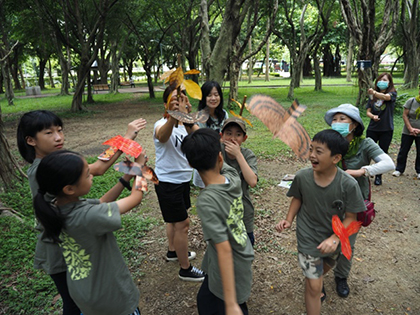
Source: Wilderness Crossing
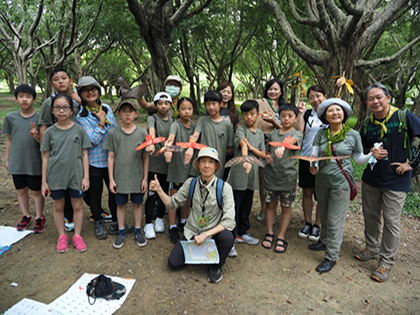
Source: Wilderness Crossing
(B) Fuyang Eco Park
Taipei City sits on the Taipei Basin, which is surrounded by mountains and forests with rich natural resources. However, perhaps because of the busy school schedules, it is a shame that we do not take advantage of exploring and experiencing such a natural environment. Instead, we are often trapped in the Taipei jungle formed with buildings. Therefore, our team Wilderness Crossing was very excited when we learned that we were going to visit the Fuyang Eco Park. We all had done extensive research on the internet beforehand to prepare ourselves for the trip!

Source: Wilderness Crossing
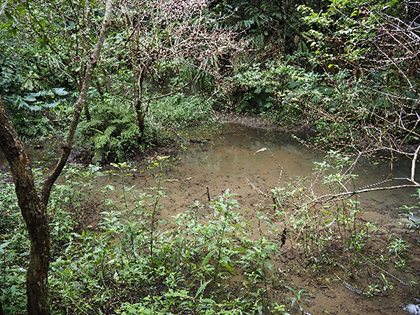
Source: Wilderness Crossing
Fuyang Eco Park used to be a military ammunition depot during the time of the Japanese Colonial Period until the late 1980s. The local residents and the Society of Wilderness (SOW) reached an agreement with the government to reorganize the site to become the only eco park in the heart of Taipei City. We were delighted to have one of the SOW volunteers as our guide for the tour. His wild name is Mr. Panda, which he said is inspired by similar resemblance of his body figure.

Source: Wilderness Crossing
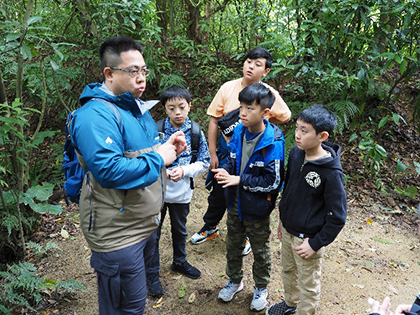
Source: Wilderness Crossing
Before entering the park, Mr. Panda had taught us some important knowledge about hiking such as what to wear to avoid hypothermia and some basic survival skills in case of encountering a dangerous situation in the mountain.
After entering the park, Mr. Panda led and guided us through different landscapes and ecosystems. He told us to keep quiet, feel nature with our body and listen to the sound of nature with our heart. In addition, we also learned the concept of “Leave No Trace”, which includes plan and prepare ahead, travel on durable surfaces, maintain clean environment, don’t take any resource from the site, minimize campfire impacts, respect wildlife and be considerate of other visitors.
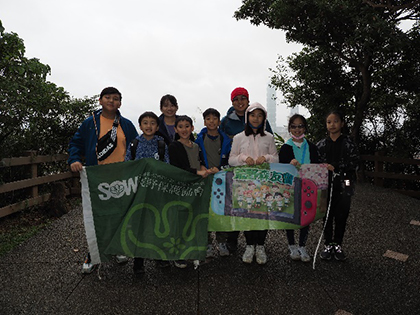
Source: Wilderness Crossing
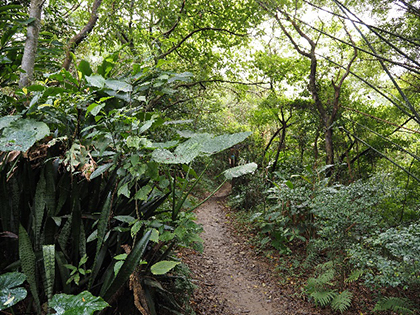
Source: Wilderness Crossing

